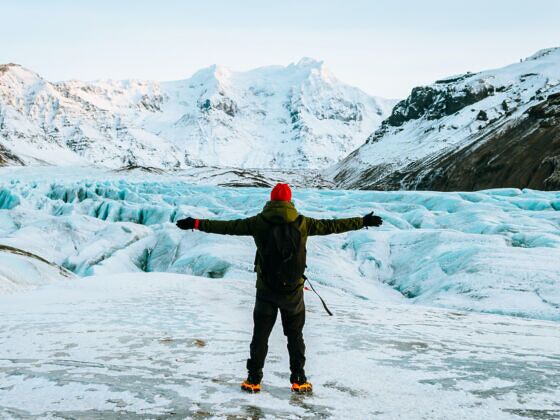Alaska is one of the few places left in the United States where the wilderness has been mostly left unsoiled by a human footprint. However, that means in these rugged landscapes, hiking and camping are best left to the experts. If you’re on of those experienced hikers, a trip to Tana Glacier in Alaska’s Wrangell-St. Elias National Park, where you walk directly on the glacier is a difficult but worthwhile excursion.


How to Experience Tana Glacier, One of Alaska's Most Spectacular Natural Wonders
The closest town to Tana Glacier is McCarthy, Alaska, about 50 miles away. The best time to visit Alaska’s Tana Glacier is from July to early September.
Hiking to Tana Glacier, and exploring the surrounding wilderness, might necessitate at least a 5 day trip. Only outdoors people who are experienced in hiking and camping in the backcountry should attempt the trip. Any potential visitors might also need experience in glacier camping, and should at least familiarize themselves with the appropriate gear, including an insulated sleeping pad, waterproof pants, and a down jacket.
When it comes time to actually hike on the glacier, crampons, which attach hiking boots for better traction, are a necessity. A trekking pole might also come in handy. One of the most challenging aspects of glacier hiking is navigating moraine – soil and rock left in the wake of a moving glacier. This unsteady ground makes for arduous hiking.
A hike to Tana Glacier might take you past Thompson Ridge and Juniper Island, the latter of which is situated between the point where Tana Glacier and Jeffries Glacier meet. There are all kinds of geological formations to be explored on the glacier, including canyons, valleys, and Iceberg Lake.
The terrain of Tana Glacier is a mixture of ice and snow, rock, and even patches of grass where wildflowers and other vegetation grow. Sometimes, streams of water flow over the crystal blue, almost transparent, ice of the glacier.
A hike across Tana Glacier is definitely not a day trip, and not a trip inexperienced hikers should try. However, if you are prepared to spend a week in the backcountry, camping and hiking in sometimes inhospitable conditions, this adventure is one that will stay with you forever.